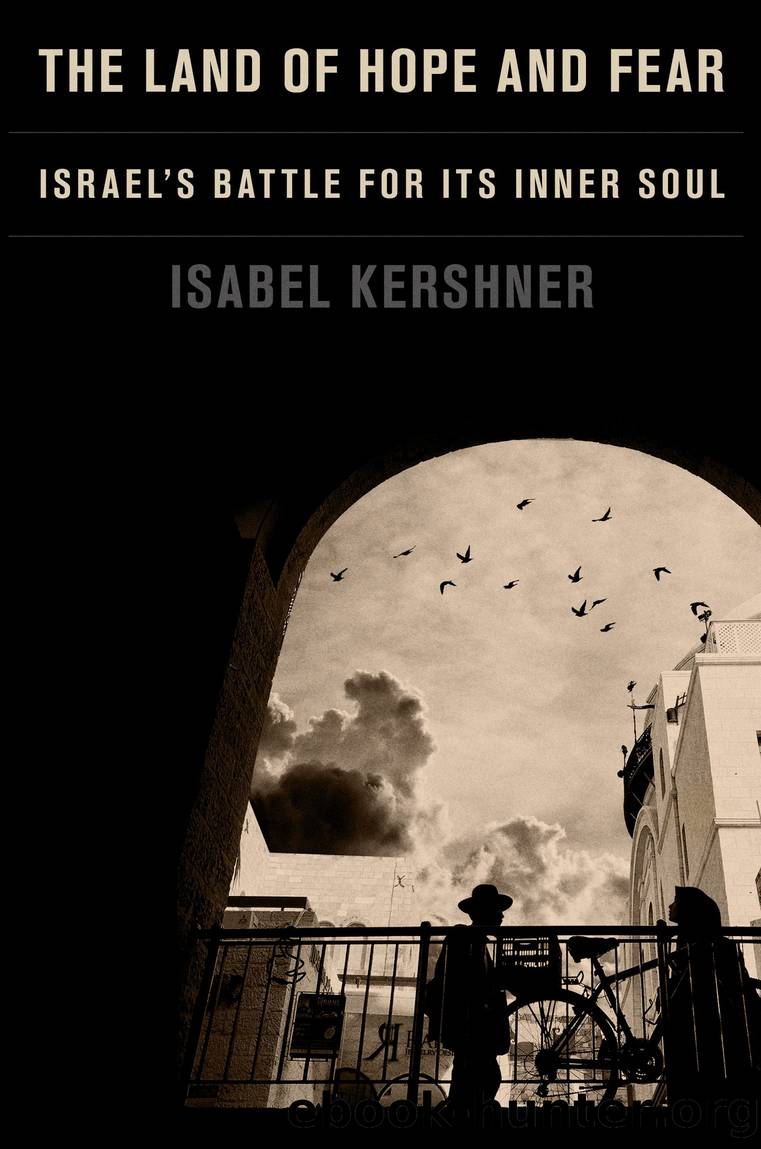The Land of Hope and Fear by Isabel Kershner

Author:Isabel Kershner [Kershner, Isabel]
Language: eng
Format: epub
Publisher: Knopf Doubleday Publishing Group
Published: 2023-05-16T00:00:00+00:00
* * *
â
The most neglected, poorest, and weakest group in Israel, as well as one of the fastest growing, was the Bedouin community, which numbered more than 200,000 people and made up about a third of the population of the Negev. An ancient culture, these semi-nomads had subsisted in the harsh desert environment for thousands of years, raising livestock, wandering in search of pastures, and pitching tents under the stars. But over the past half century, under Israeli rule, Bedouin society had undergone a dizzying process of modernization. The erection of modern borders, the imposition of military rule in the early years of the state, and the encroachment of economic and technological change in the region had put an end to the traditional migrations when the Bedouin tribespeople would wander across the southern Negev desert and the Sinai Peninsula for weeks on camelback, trying their luck at planting grains in the winter and returning months later for the harvest.
Daham Al Atawneh, a retired publisher who was born in the Negev in 1945, and who had spent years working for the BBC in London before returning to his village of Houra, told me that the men of his tribe only began to swap their traditional robes for shirts and pants after military rule was lifted in the 1960s and as the Bedouin came more into contact with other Israelis. Fifty years later the rhythms of a simple desert life that had survived almost unchanged for thousands of years had all but vanished. The concept of distance and remoteness changed with the advent of the transistor radio, then cars, then mobile phones.
Though the old culture remained a source of pride for many Bedouin in Israel, the social structures were fast breaking down. The Israeli government worked to corral the Bedouin into purpose-built urban centers that nevertheless lacked adequate infrastructure, arguing that the state could not provide basic services to every encampment dotted across the wilderness, including formal education, which the younger Bedouin came to value. Bedouin complained that the Israelis exploited their lack of formal land deeds: Having been a largely illiterate society with an oral tradition of poetry and one of justice for settling disputes, many lost their ancestral lands overnight.
By the 2000s, about half the community had moved into unlovely urban centers at the governmentâs urging. The other half lived in dozens of villages and encampments scattered across the southern desert, tin-roofed shanty towns unrecognized by the Israeli authorities that were not even hooked up to the national electricity grid. Locked in a protracted land dispute with the central government, many lived under the constant threat of demolition orders.
A society within a society within a society in flux, Bedouin families were typically large and some still practiced polygamy, bearing multiple offspring and receiving child support from the state. With the breakdown of old social structures, the towns had become foci of lawlessness and poverty, with the worst educational levels and life expectancy in the country. The largest Bedouin urban center,
Download
This site does not store any files on its server. We only index and link to content provided by other sites. Please contact the content providers to delete copyright contents if any and email us, we'll remove relevant links or contents immediately.
| Haggadah | Hasidism |
| History | Holidays |
| Jewish Life | Kabbalah & Mysticism |
| Law | Movements |
| Prayerbooks | Sacred Writings |
| Sermons | Theology |
| Women & Judaism |
The Secret Power of Speaking God's Word by Joyce Meyer(2976)
Man's Search for Meaning by Viktor E. Frankl(2606)
Mckeown, Greg - Essentialism: The Disciplined Pursuit of Less by Mckeown Greg(2388)
MOSES THE EGYPTIAN by Jan Assmann(2373)
Devil, The by Almond Philip C(2282)
The Complete Dead Sea Scrolls in English (7th Edition) (Penguin Classics) by Geza Vermes(2236)
Unbound by Arlene Stein(2230)
I Capture the Castle by Dodie Smith(1985)
Schindler's Ark by Thomas Keneally(1830)
The Invisible Wall by Harry Bernstein(1768)
The Gnostic Gospel of St. Thomas by Tau Malachi(1738)
The Bible Doesn't Say That by Dr. Joel M. Hoffman(1652)
The Secret Doctrine of the Kabbalah by Leonora Leet(1575)
Political Theology by Carl Schmitt(1544)
The Jewish State by Theodor Herzl(1507)
A History of the Jews by Max I. Dimont(1485)
The Dead Sea Scrolls Bible by Martin G. Abegg(1472)
The Book of Separation by Tova Mirvis(1459)
Oy!: The Ultimate Book of Jewish Jokes by David Minkoff(1335)
